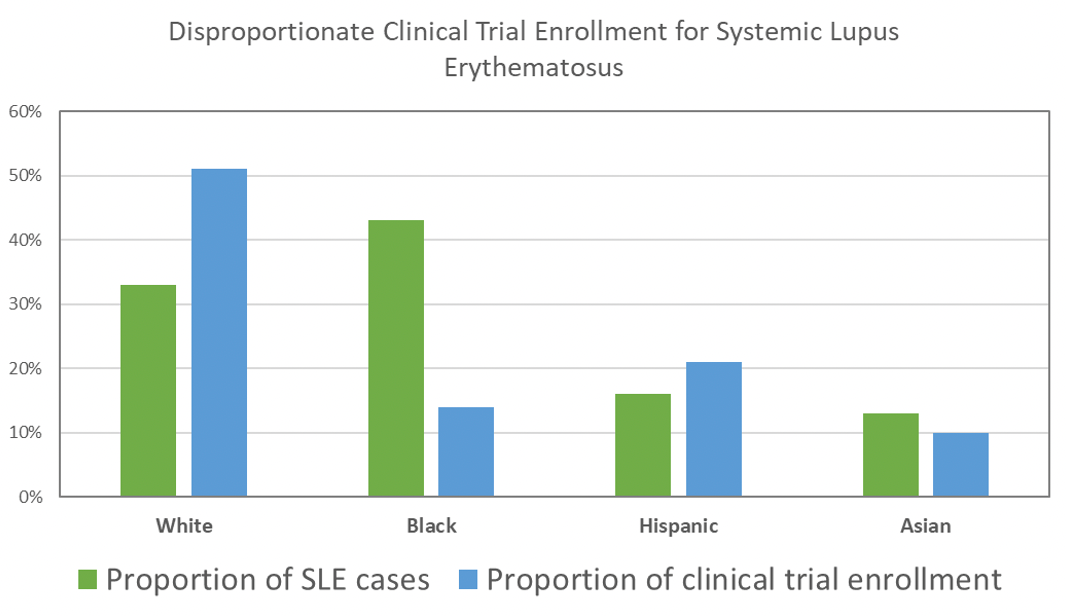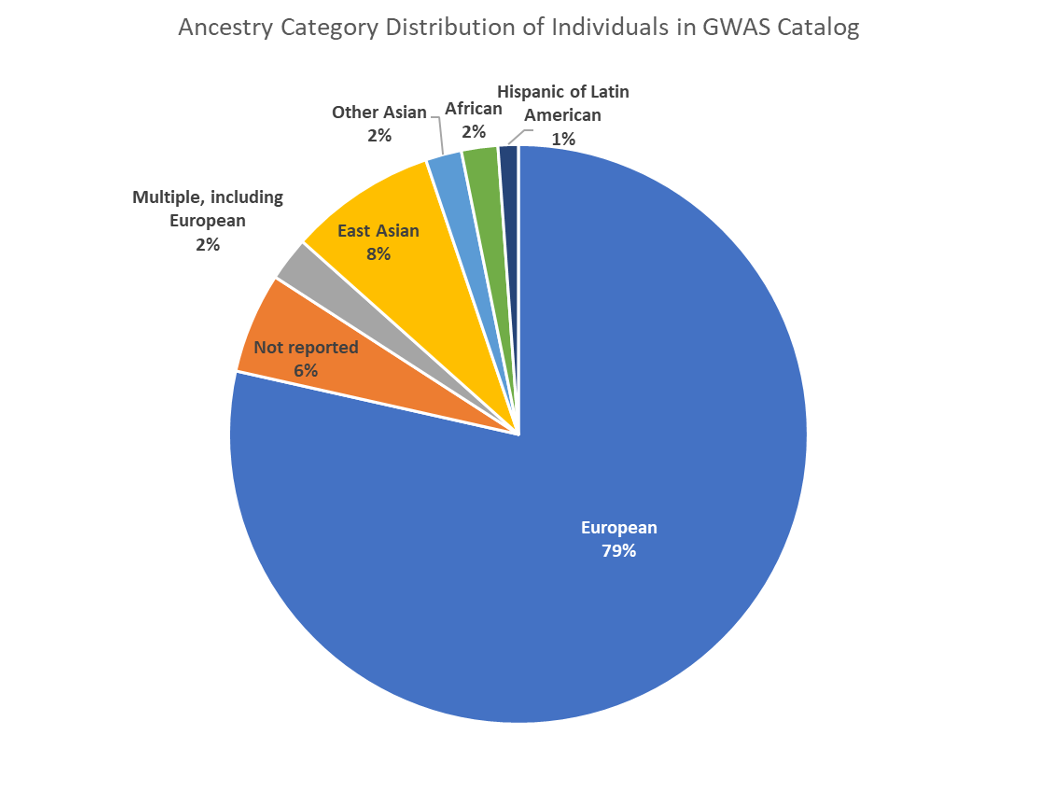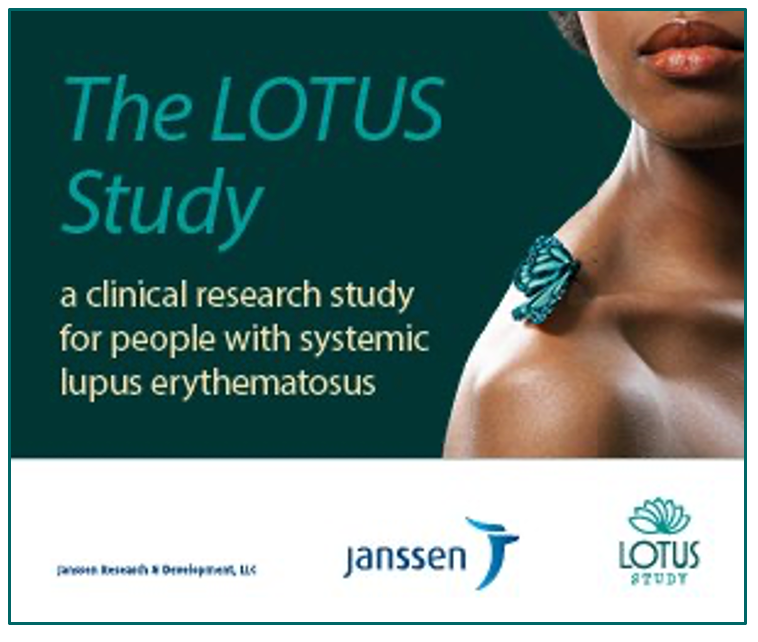The Bridges We Must Build
Improving clinical trial diversity and health equity through strategic collaborations.

Lack of diversity in clinical trials limits the understanding of how novel treatments work across different patient populations, including in those most impacted by the disease. This hinders the ability to reach all patients with effective treatment options and is one of the reasons accounting for different health outcomes in certain populations.1,2 I have personally witnessed this during my clinical experience as a trainee in India and when caring for largely underserved patient populations in the south side of Chicago. Therefore, enabling representation of minority patients in clinical trial programs is a critical component of driving health equity.
At Janssen, we are reshaping the future of how we conduct research, and ensuring we are bringing a diverse perspective to clinical trials. As part of this, we are committed to diversity, equity, and inclusion (DE&I) as we take on today’s toughest healthcare challenges. In addition to racial and ethnic diversity, clinical trials also need to consider many other types of demographics, such as sex and gender (including LGBTQIA+ populations), as well as people from various geographic and socioeconomic backgrounds. These other types of diversity are also a focus at Janssen, but this article specifically provides our perspective on racial and ethnic diversity in clinical trials.
Lack of diversity in clinical trials and its impact
When large global studies are performed to evaluate the safety and efficacy of investigational medications, patients enrolled in the studies from North America and Europe are largely Caucasian, with limited numbers from different racial and ethnic populations, such as from Black, Hispanic or Asian backgrounds. An example of a disease where this mismatch of representation is evident is in clinical trials conducted in patients with systemic lupus erythematosus, or lupus.
Lupus is a chronic inflammatory disease that disproportionately affects African American and Hispanic patients. Consistent with many clinical development programs, there is limited representation of diverse and under-represented minority patients in lupus clinical trials. For example, while Black patients comprise 43 percent of severe lupus cases, they account for only 14 percent of recruited patients in clinical trials. This contrasts with White patients for whom the prevalence of lupus is about 33 percent, but over 51 percent of clinical trial patients are White.3
Figure 1. Adapted from Falasinnu T, et al. The Representation of Gender and Race/Ethnic Groups in Randomized Clinical Trials of Individuals with Systemic Lupus Erythematosus. Curr Rheumatol Rep. 2018 Mar 17;20(4):20.

Such disparities have also been noted in several cancer clinical studies and even human genomic studies, further limiting understanding of basic pathological processes in several diseases (see figure below).
Figure 2. Adapted from Sirguo G, et al. “Ancestry category distribution of individuals in genome-wide association studies (GWAS) catalog.” The Missing Diversity in Human Genetic Studies. Cell. Vol 177, 2019.

Our limited understanding of disease and the therapeutic effect of medications in diverse patients negatively impacts our ability to translate genetic and clinical research into clinical practice and public health policies, and can result in data being highly incomplete, or worse, mistaken.4 In my own clinic, while treating largely African American and Hispanic patients, I would have preferred to see clinical trial data specifically in these populations to select the appropriate treatments for my patients. In addition, the patients from ethnically diverse backgrounds would have preferred to see clinical trial evidence specifically in patients with similar demographic characteristics which would have likely allowed for enhanced decision making.
Janssen’s commitment to DE&I
Data is an important part of informing the design of future clinical trials, and the lack of enrollment data and diverse participants makes understanding past results and informing future trials challenging. In the US, for example, an analysis of clinical trials from the last 20 years shows that the majority of studies do not report race/ethnicity enrollment data. Those limited studies that report it demonstrate there is underrepresentation of minorities, though there has been some modest improvement over time.5
This paradigm persists despite many national and international efforts to increase and facilitate greater diversity in clinical trials. Many pharmaceutical companies now have programs dedicated to including diverse patients in their studies. At Janssen, many of the diseases we study, such as psoriasis, rheumatoid arthritis, lupus, and inflammatory bowel diseases, disproportionately affect diverse and underserved communities,6,7,8,9 making it more important for us to develop DE&I strategies and programs to increasing the enrollment of diverse populations in our clinical trials.
In 2021, Johnson and Johnson launched the Our Race to Health Equity (ORTHE) initiative to further demonstrate our commitment to DE&I through a five-year, $100 million investment in health equity solutions. There are three areas of focus for how we are working to change the healthcare landscape:
- Healthier Communities: Helping close the racial mortality gap through strategies that increase access to underserved and underrepresented communities.
- People-First Culture: Cultivating one of the most diverse and inclusive workforces that inspires innovative healthcare solutions around the world.
- Enduring Alliances: Leveraging our powerful partnership network to combat racial and social health determinants.
As part of our commitment to healthier communities, we are investing in culturally competent community care models that create healthier outcomes for people of color. To help accomplish this, we built a Diversity in Clinical Trials (DEICT) team whose key priority is to help address disparities by increasing diversity in clinical trial research.
Partnering and engagement to eliminate health inequities
To help enhance diversity in clinical trials, we identified opportunities in our processes for change and are collaborating with external partners to further our disease education, achieve new insights about patient care and preferences, and make real change in our approach toward reaching patients of various races and ethnicities. Many studies leverage previous trial protocols without fully assessing the impact of the exclusionary criteria and study conduct, which can lead to decreased eligibility for diverse patients. As we aim to improve diverse representation in clinical trials, we are taking a critical look to reevaluate these elements.3
At Janssen, we have been intentional about engaging two main stakeholder groups in our partnerships strategy for clinical trials: the patients themselves, along with patient support teams and advocacy groups, and clinical trialists and clinical site teams. Together, we are committed to understanding current barriers to clinical trial diversity, and then breaking down those barriers to design inclusive trials.
With patients and their communities
As a first step, we utilized several tools to engage appropriate patients and their communities. Leveraging data science methods, we conducted several patient cohort analyses, generating data about the demographics of patient participants broken out by race, ethnicity, gender and age. We were able to uncover trends in screening criteria and highlight specific inclusion and exclusion criteria that might have contributed to screening failures, discontinuing trial participation, and opportunities for redefining such criteria.
By collaborating with our Patient Engagement teams and key patient organizations, we were able to gather insights through patient panels, advisory boards and online surveys discussing specific information pertaining to protocol design and challenges, and operational elements to learn about what limits or creates obstacles to enrollment. These activities allowed us to better understand patients’ attitudes toward enrolling and staying in clinical trials, their attrition patterns and recognizing the specific reasons as to why patients in our Immunology studies refuse, lose interest, and/or drop out of our clinical trials.
These insights have helped us uncover gaps and provide opportunities to update our study designs to be more inclusive for diverse patients, paying specific attention to the needs of various race and ethnicities. In addition, these insights helped us engage with patient advocacy organizations that enable enhancing disease and clinical trial awareness and redefine perception of clinical trials in minority populations.
Our DEICT team also identified key partnership opportunities with external community organizations. These partners are embedded in patient communities and accelerate building trust to reduce barriers to enrollment by leveraging trusted voices. It is fully recognized that there could be skepticism in communities about ethical conduct of clinical research. Our aim through these partnerships was to employ transparent messaging about our study designs for recruitment materials, engage with the community in a long-term and organic fashion, and to educate physicians on cultural considerations and implicit biases. Through these types of strategic collaboration, we are making remarkable progress in this area by bringing knowledge and opportunity to patients.
With sites and investigators
While the focus on our partnerships with clinical trial sites and investigators was critical to making real progress in our mission, lack of patient diversity enrollment at investigator sites was a hinderance leading them to be ineffective diverse recruiters in our trials, despite sometimes being large community hospitals or academic facilities.
We utilized key resources to revise our approach in supporting clinical trial sites to be fully equipped to enroll patients ideal for the study:
- Patient Mapping: We leveraged real world data partners to generate information on hot spots within the United States providing potential subject pools to provide to existing sites or to engage new sites that had not previously participated in clinical trials, and to find areas where we can increase sites’ community engagement.
- Enrollment Data: Partnering with internal and external data analytics teams, we created user-friendly internal diversity dashboards that showcased Race & Ethnicity Distribution for Janssen trials, across multiple therapeutic areas, and shared these data with the clinical trial sites to encourage diverse patient enrollment. Additionally, we leveraged historical recruitment data to identify DEI opportunity sites outside of the United States as a means to help achieve our global DEI recruitment goals.
- Site Voice: Similar to patient surveys, we generate insights through investigative site voice surveys that enhance our understanding of site capabilities for recruiting diverse patients as well as customized the training, recruitment and retention efforts specific to a site’s need. This also strengthened our approach towards clinical sites to enhance their own efforts in engaging, educating as well as recruiting diverse patients.
Once our trial site sponsors adapted newly developed protocols to be more inclusive and realized that it is critical to bring the trial where the patients reside, our team then planned to help focus on intentional and enduring community engagements. Through Janssen’s internal Clinical Trial Navigator program, we provided clinical trial sites with expanded access through virtual trial elements, increased potential patient pools in diverse communities, supported additional site resourcing to help with patient engagement, and offered patient support through trial navigators/study buddies. Our hope is that through these efforts, we will continue to build trusted relationships within Black, Indigenous, and People of Color (BIPOC) communities.
DEICT in action: A Janssen case study
The Janssen Immunology DE&I team put all these elements together through our LOTUS study in patients with lupus. LOTUS was a large Phase III study for an investigational agent in patients with active systemic lupus erythematosus.
First, we selected clinical trial sites and investigators based on their demonstrated ability to enroll a diverse population. We formed a LOTUS diversity task force to customize tactics specific to each site and set a plan for regular data review.

Partnering with patient and community organizations, we created patient-approved materials in a variety of formats with diverse imagery representative of the variety of different racial/ethnic patients who we wanted to be enrolled in the study. In addition, we developed educational materials to create awareness about diversity and tips for success, leveraging social media and outreach to disseminate information in communities both locally and globally, specifically geared toward Black, Hispanic, and Asian dominant areas. In partnership with patient advocacy and religious groups, we also conducted community outreach to enhance trial awareness and recruitment. Additionally, we formed specific site engagement teams to provide clinical trial sites with population specific brochures, education and training to provide appropriate materials to share with racially and ethnically diverse populations to help recruit diverse patients.
Results and lessons learned
Although the trial did not ultimately show a clinical benefit for this therapy in lupus patients, it was a tremendous success from a DE&I standpoint. The efforts that we put in place resulted in a markedly increased enrollment of a diverse patients, which exceeded our diversity goals. We had set a target for more than 30% of our LOTUS trial participants to be non-White. We exceeded these diversity targets with nearly 50 percent of trial participants non-White (17% Asian, 9% Black, and 22% Hispanic).
As we plan for future studies, we have learned many important lessons from LOTUS to help improve diversity among trial participants:
- There is a need for dedicated resources for DE&I efforts that focus on community engagement & education for clinical trials that are customized to the diverse patients we want to enroll.
- Seeking patient voices early in our protocol development will increase our chances of a more inclusive protocol.
- Partnering with patients, patient advocacy groups and diverse investigators and clinical trial staff will enable us to reach new communities and patients through trusted sources.
Together we can ensure an equitable future
We aspire to help eradicate racial and social injustices as a public health threat by eliminating health inequities for people with diverse ethnic and socioeconomic backgrounds. We believe that having open and honest conversations about health equity is an integral part of understanding and removing the barriers to participation in clinical trials so that actionable, tangible solutions can be created. Janssen continues to work to better acknowledge, recognize and address the barriers preventing clinical trial participation for underserved and underrepresented populations who may face fear, mistrust, lack of awareness of the options available and logistical challenges.
But we cannot do it alone. To create real change across our industry, we need all partners to take up this DE&I work in clinical trials with commitment and integrity.It does take a village to bring diverse patients into research and clinical trials. Together, we believe we can create a world where the color of your skin or your racial/ethnic background is not a determinant of your access to care, quality of care, or health outcomes and we can work toward an equitable future, where all individuals are represented in research and in treatment.
To learn more about our commitment to DE&I in clinical trials check our Research Includes Me website.
Chetan Karyekar, vice president, clinical development, rheumatology, Janssen
References
- Diversity & Inclusion in Clinical Trials. Available at: https://www.nimhd.nih.gov/resources/understanding-health-disparities/diversity-and-inclusion-in-clinical-trials.html. Accessed November 2022
- Lack of Diversity in Clinical Trials Costs Billions of Dollars. Incentives Can Spur Innovation. Available at: https://healthpolicy.usc.edu/article/lack-of-diversity-in-clinical-trials-costs-billions-of-dollars-incentives-can-spur-innovation/#:~:text=The%20report%20details%20several%20adverse,excluded%20populations%2C%20and%20hindering%20innovation. Accessed December 2022.
- Falasinnu T, et al. The Representation of Gender and Race/Ethnic Groups in Randomized Clinical Trials of Individuals with Systemic Lupus Erythematosus. Curr Rheumatol Rep. 2018 Mar 17;20(4):20.
- Sirguo G, et al. The Missing Diversity in Human Genetic Studies. Cell. Vol 177, 2019.
- Turner B, et al. Race/ethnicity reporting and representation in USclinical trials: A cohort study. The Lancet. Vol 11; July 2022.
- Takeshita J, Chau J, Callis Duffin K, Goel N. Promoting diversity, equity, and Inclusion for Psoriatic Diseases. The Journal of Rheumatology. 2022. doi:10.3899/jrheum.211330
- Ciofoaia EI, Pillarisetty A, Constantinescu F. Health disparities in rheumatoid arthritis. Therapeutic Advances in Musculoskeletal Disease. 2022;14. doi:10.1177/1759720x221137127
- Drenkard C, Lim SS. Update on lupus epidemiology: Advancing health disparities research through the study of minority populations. Current Opinion in Rheumatology. 2019;31(6):689-696. doi:10.1097/bor.0000000000000646
- Odufalu F-D, Aboubakr A, Anyane-Yeboa A. Inflammatory bowel disease in underserved populations: Lessons for practice. Current Opinion in Gastroenterology. 2022;38(4):321-327. doi:10.1097/mog.0000000000000855
Reaching Diverse Patient Populations With Personalized Treatment Methods
January 20th 2025Daejin Abidoye, head of solid tumors, oncology development, AbbVie, discusses a number of topics around diversity in clinical research including industry’s greatest challenges in reaching diverse patient populations, personalized treatment methods, recruitment strategies, and more.